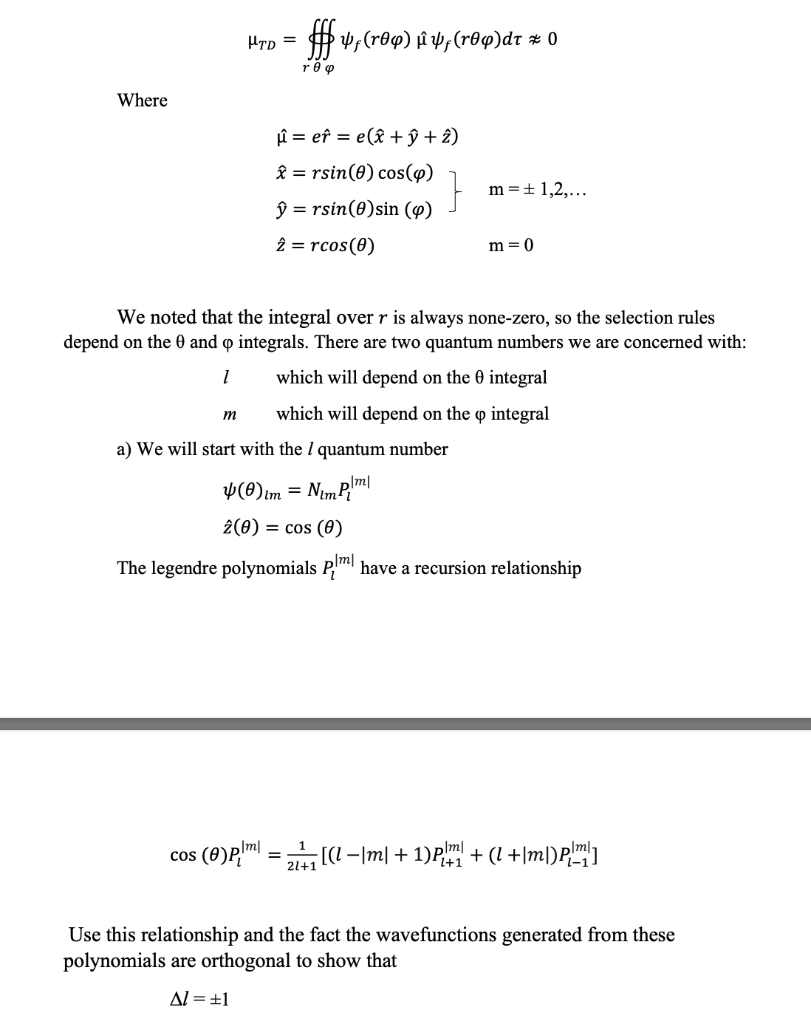Answered step by step
Verified Expert Solution
Question
1 Approved Answer
TD=rf(r)^f(r)d0 Where ^=er^=e(x^+y^+z^)x^=rsin()cos()y^=rsin()sin()}m=1,2,z^=rcos()m=0 We noted that the integral over r is always none-zero, so the selection rules depend on the and integrals. There are two

Step by Step Solution
There are 3 Steps involved in it
Step: 1

Get Instant Access to Expert-Tailored Solutions
See step-by-step solutions with expert insights and AI powered tools for academic success
Step: 2

Step: 3

Ace Your Homework with AI
Get the answers you need in no time with our AI-driven, step-by-step assistance
Get Started


